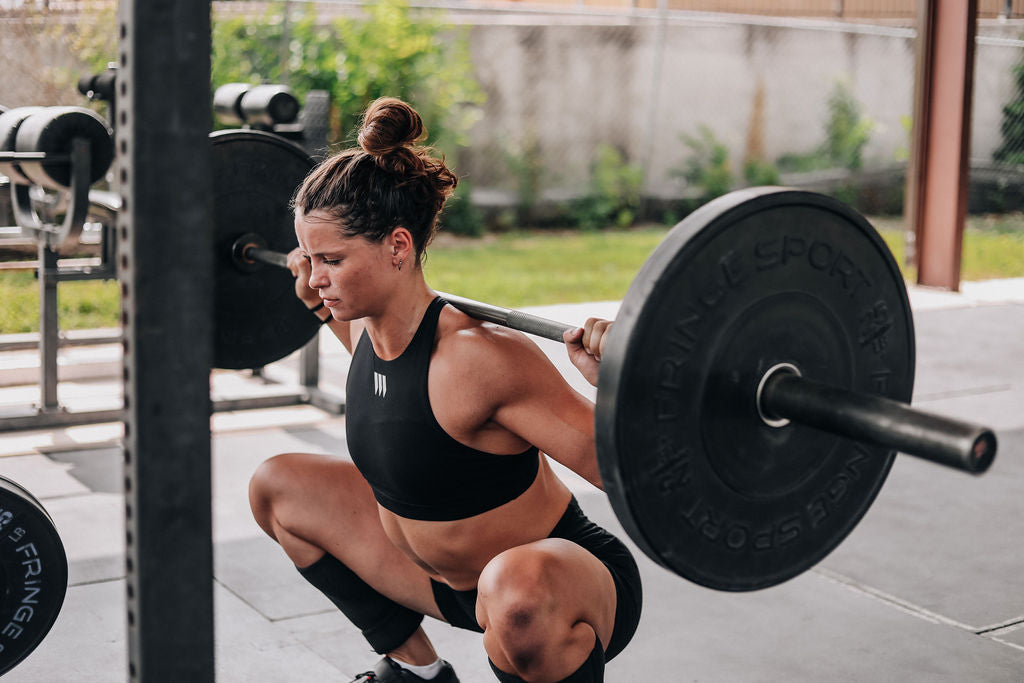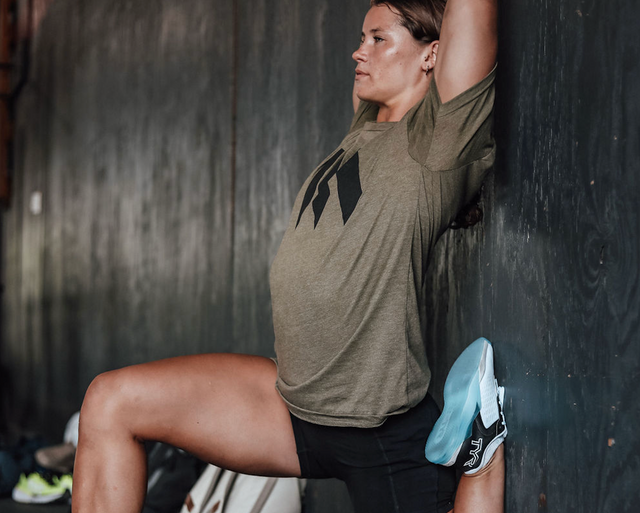If you're using BPC-157 for recovery, injury healing, or gut repair, you’ve likely wondered: how long does it stay in your system? Whether you're planning a peptide cycle, rotating compounds, or competing in a drug-tested sport, knowing BPC-157’s half-life and clearance time is important.
Unlike stimulants or hormones, BPC-157 doesn’t produce an immediate “on” or “off” switch. It works by initiating cellular repair, and those effects can persist even after the peptide itself clears your bloodstream. That makes understanding both biological presence and functional impact crucial for anyone managing recovery timelines, cycling strategies, or compliance with testing protocols.
In this guide, we’ll break down what we know (and what we don’t) about BPC-157’s half-life, how long it stays in your body, and how this impacts its safe and effective use.
What Is BPC-157?
BPC-157 (Body Protection Compound-157) is a synthetic peptide composed of 15 amino acids, originally derived from a protective protein found in human gastric juice. It’s classified as a pentadecapeptide and belongs to a group of synthetic peptides used for tissue regeneration and healing.
Unlike hormones or anabolic agents, BPC-157 is non-hormonal, non-steroidal, and does not disrupt natural endocrine function. Its popularity in recovery and injury repair stems from its ability to support healing across multiple systems, including the:
-
Musculoskeletal system (tendons, ligaments, joints, muscles)
-
Gastrointestinal tract (stomach lining, intestines)
-
Vascular system (microcirculation and capillary regeneration)
-
Nervous system (neuroprotection and nerve repair)
Although not FDA-approved and legally sold as a research chemical, BPC-157 is widely used off-label in athletic, clinical, and biohacking circles. It’s available in injectable and oral forms, both of which are used depending on the target tissue and goal of therapy.
To learn more about the different ways to use it, see:
→ Best Forms of BPC‑157: Injectable vs Oral vs Capsules Explained
How BPC-157 Works in the Body
BPC-157 works by stimulating the body’s natural repair mechanisms across several biological systems. Unlike compounds that mask pain or simply reduce inflammation, BPC-157 activates cellular processes that rebuild damaged tissue, protect organs, and accelerate healing from the inside out.
Here are the primary mechanisms behind its regenerative effects:
1. Angiogenesis (New Blood Vessel Formation)
BPC-157 upregulates vascular endothelial growth factor (VEGF) and nitric oxide pathways, promoting the development of new blood vessels in injured tissue. This enhances oxygen and nutrient delivery, accelerating the healing process.
“BPC-157 facilitated angiogenesis and vascular stability in ischemic tissue, contributing to accelerated wound and muscle healing.”
— Sikiric, P. et al. Journal of Physiology–Pharmacology, 2009
2. Fibroblast Activation and Collagen Synthesis
Fibroblasts are responsible for producing collagen and rebuilding structural tissue. BPC-157 enhances fibroblast migration and function, improving tendon, ligament, and connective tissue repair.
“In rodent models, BPC-157 increased fibroblast density and collagen type I synthesis in injured muscle and tendon tissue.”
— Drmic, D. et al. Pharmacological Reports, 2018
3. Gut Mucosal Protection and Regeneration
Because BPC-157 originates from gastric proteins, it plays a key role in stabilizing the gut lining, protecting it from damage caused by NSAIDs, alcohol, or stress.
“BPC-157 significantly reduced gastrointestinal bleeding and restored mucosal integrity in NSAID-induced ulcer models.”
— Sikiric, P. et al. Current Pharmaceutical Design, 2020
For more on digestive applications, visit:
→ BPC-157 for Gut Healing: How This Peptide Supports IBS, Leaky Gut, and Digestive Repair
4. Neuroprotection and Nerve Regeneration
BPC-157 modulates neurotransmitters like dopamine and serotonin while supporting nerve growth and repair in both the central and peripheral nervous systems.
“BPC-157 restored function after sciatic nerve transection and regulated dopaminergic tone in neuroinflammatory models.”
— Perovic, D. et al. Molecules, 2020
These mechanisms explain why BPC-157 has systemic benefits—and also why its effects can persist even after the peptide itself clears the bloodstream. That makes understanding its half-life and clearance timeline especially relevant for anyone planning a peptide cycle, stacking protocol, or competitive event.
What Is BPC-157’s Half-Life?
BPC-157’s exact half-life in humans has not been formally established through clinical pharmacokinetic studies. However, based on animal research and anecdotal user reports, we can estimate its half-life and systemic duration depending on how it’s administered—either injectable or oral.
While we don’t yet have precise human data, BPC-157 appears to be:
-
Rapidly absorbed into circulation
-
Short-acting in plasma, but with longer-lasting biological effects due to downstream healing responses
-
Cleared from the bloodstream in several hours, though effects may persist for days or weeks
“BPC-157 initiates angiogenic and cytoprotective signaling cascades that extend beyond its direct presence in the bloodstream.”
— Sikiric, P. et al. Current Pharmaceutical Design, 2020
Estimated Half-Life Ranges (Based on Available Data)
| Form | Estimated Half-Life | Notes |
|---|---|---|
| Injectable (SubQ) | ~4 to 6 hours | Fast absorption, moderate duration |
| Injectable (IM) | ~6 to 8 hours | Possibly slower release and longer duration |
| Oral (capsule) | ~2 to 4 hours | Shorter systemic presence but direct gut contact |
It’s important to note that therapeutic effects often continue after the peptide is cleared, especially in the case of ongoing tissue repair, collagen synthesis, and vascular remodeling.
To explore how oral and injectable delivery compare for different use cases, read:
→ Best Forms of BPC‑157: Injectable vs Oral vs Capsules Explained
Factors That Influence How Long BPC-157 Stays in Your System
Although BPC-157’s half-life is relatively short, the actual time it remains active in the body can vary widely based on individual factors. These variables affect not just how long the peptide stays in circulation—but also how long its biological effects persist after administration.
1. Dose and Frequency of Use
Higher and more frequent dosing may saturate tissues and prolong the duration of activity. For example:
-
A single 250mcg dose may clear within 24 hours
-
Daily dosing for 4–6 weeks may result in sustained biological activity for days or even weeks after stopping
The longer and more consistent your protocol, the more tissue-level activation continues beyond clearance.
2. Delivery Method (Injection vs Oral)
As covered in detail in the Best Forms of BPC-157, oral BPC-157 may be cleared faster but has local effects on the GI tract, while injectables lead to systemic distribution.
-
Oral: Shorter systemic half-life, longer local GI effect
-
SubQ/IM Injection: Longer systemic presence, especially with IM use
3. Tissue Target and Injury Severity
BPC-157 accumulates and acts most strongly in injured or inflamed tissue. The severity of injury or inflammation can affect how long it remains active at the target site.
-
More damaged tissue = longer therapeutic activity
-
Mild inflammation = shorter duration of action
This is why users healing from surgery or major soft tissue injuries may feel benefits weeks after their last dose.
4. Metabolic Rate and Individual Clearance
People with faster metabolisms may clear peptides more quickly. Other factors that influence metabolic rate and peptide turnover:
-
Age
-
Liver and kidney function
-
Nutrient status
-
Exercise and hydration levels
While the half-life may remain consistent, subjective effects can vary depending on how your body processes and responds to BPC-157.
5. Peptide Purity and Formulation
Lower-quality or improperly stored peptides may degrade faster, reducing their effective half-life and duration. Always choose pharmaceutical-grade peptides from sources that offer third-party testing.
For maximum consistency, avoid over-concentrated reconstituted vials or anything lacking a Certificate of Analysis (COA).
These variables explain why some users report feeling the effects of BPC-157 for several days post-cycle—while others may notice faster resolution and clearance. Understanding these factors is essential for planning cycles, stacking protocols, and managing expectations.
Injectable vs Oral Clearance
The method by which BPC-157 is delivered—injectable vs oral—significantly influences how it’s absorbed, how long it stays active in the body, and how quickly it clears your system. Each route has different pharmacokinetic properties, impacting not only the half-life, but also the site of action and bioavailability.
Injectable BPC-157
Injecting BPC-157 subcutaneously (SubQ) or intramuscularly (IM) bypasses the digestive system and allows for systemic absorption, delivering the peptide into the bloodstream to reach injured tissues throughout the body.
Key features:
-
Higher systemic bioavailability
-
Slower clearance, particularly with IM injections
-
Stronger effects on muscles, tendons, ligaments, and nerves
-
May stay in circulation for 6–8 hours, with extended biological action beyond that
“Injectable BPC-157 leads to wide systemic distribution and is particularly effective for connective tissue injuries and neurological repair.”
— Sikiric, P. et al. Current Pharmaceutical Design, 2020
Oral BPC-157
Oral capsules are ideal for gastrointestinal conditions because the peptide remains more concentrated in the digestive tract. Despite lower systemic absorption, it maintains local activity in the gut, offering significant benefits for:
-
Ulcers and acid damage
-
Leaky gut and intestinal inflammation
-
NSAID-induced GI injury
Key features:
-
Shorter systemic half-life (~2–4 hours)
-
Strong local effect on gastric mucosa
-
Best used for digestive repair and mucosal protection
Which Clears Faster?
In general, oral BPC-157 clears more quickly from the bloodstream, but continues working in the gut through direct contact. Injectable forms linger longer in the system due to broader distribution and slower degradation, particularly when injected intramuscularly.
If you’re deciding between formats based on clearance or detection, injections may remain active slightly longer—but both forms clear within 24–48 hours, depending on dosing.
To explore form selection based on your recovery goals, see:
→ Best Forms of BPC‑157: Injectable vs Oral vs Capsules Explained
How Long Do Effects Last After Stopping BPC-157?
One of the most unique features of BPC-157 is that its biological effects often outlast its physical presence in the body. Even after the peptide is cleared from your bloodstream, the healing processes it activated can continue for days or even weeks—especially if you completed a consistent 4–6 week protocol.
Residual Activity vs Systemic Presence
It’s important to distinguish between:
-
Clearance time – when the peptide is no longer measurable in your system (usually within 24–48 hours)
-
Functional effects – the cellular healing, angiogenesis, and inflammation modulation that continues long after clearance
This is common with regenerative peptides. The compound initiates signaling cascades that continue without needing the peptide to remain in circulation.
“BPC-157 exhibits a sustained healing response through activation of local growth factors and angiogenic pathways that persist after peptide withdrawal.”
— Sikiric, P. et al. Current Pharmaceutical Design, 2020
Expected Duration of Effects
| Dosing Period | Systemic Presence | Residual Healing Effects |
|---|---|---|
| Single dose | 12–24 hours | 1–2 days of mild support |
| 2-week protocol | Cleared in 1–2 days | Up to 1 week of continued healing |
| 4–6 week protocol | Cleared in 48 hours | 2–4+ weeks of ongoing tissue repair |
This explains why some users experience a “lagging benefit” after finishing their cycle—such as a tendon continuing to improve or gut symptoms stabilizing well after the last dose.
Can You Feel Worse After Stopping?
Some users report a mild “drop-off” or return of symptoms after stopping, especially if:
-
The underlying condition was not fully healed
-
BPC-157 was used without addressing root causes (e.g., diet, stress, overtraining)
-
They used lower doses or short durations without stacking foundational support like L-Glutamine or Collagen Protein
This doesn't mean BPC-157 stopped working—rather, that the body still needs support to complete the healing process. Cycling off and monitoring response is a smart strategy before reintroducing the compound again.
Can BPC-157 Be Detected in Drug Tests?
One of the most common concerns for athletes, competitors, and professionals using BPC-157 is whether it shows up on a drug test—especially in WADA-governed sports or jobs with strict testing protocols.
The short answer: BPC-157 is currently banned by WADA, but it is not included in standard drug testing panels—though this may change in the future.
WADA Status
The World Anti-Doping Agency (WADA) added BPC-157 to its Prohibited List under section S0 (Non-Approved Substances). This means it is banned at all times, in and out of competition, for athletes subject to WADA testing.
“Any pharmacological substance which is not addressed by any of the subsequent sections of the List and with no current approval by any governmental regulatory health authority for human therapeutic use... is prohibited at all times.”
— WADA Prohibited List
Because BPC-157 is not FDA-approved and remains a research-only peptide, its use is prohibited regardless of intended purpose.
Is BPC-157 Included in Drug Tests?
Most workplace and athletic drug tests do not screen for peptides like BPC-157. Standard urine or blood panels typically look for:
-
Narcotics
-
Stimulants
-
Steroids
-
THC/cannabinoids
-
Benzodiazepines
-
Alcohol
-
Anabolic agents
Peptide detection requires advanced LC-MS/MS testing, which is expensive and rarely included unless:
-
You are in elite athletics (Olympic, NCAA, CrossFit Games, etc.)
-
You’re subject to targeted anti-doping panels
-
A governing body has reason to suspect peptide use
Detection Time (If Tested)
While no official data exists, if a test were to screen for BPC-157, it would likely only be detectable for 24–72 hours post-dose, depending on:
-
Dose and injection site
-
Metabolic rate
-
Lab sensitivity
This is consistent with its short half-life and fast clearance, especially in the injectable form.
Bottom Line
-
If you’re in a drug-tested sport, you should avoid BPC-157 due to its WADA ban.
-
If you’re not tested or are in a non-WADA sport (e.g., recreational CrossFit, jiu-jitsu, or bodybuilding), BPC-157 is unlikely to be detected or tested.
-
Always cycle responsibly and stay updated on anti-doping rules if you plan to compete.
For performance-enhancing alternatives with legal support, explore:
→ The Best Peptides for Recovery: BPC-157, TB500, MK-677, Ipamorelin, CJC-1295, and More
Implications for Cycling and Stacking BPC-157
Understanding how long BPC-157 remains active is key to designing smart cycles and maximizing recovery results. Even after the peptide clears your system, the biological processes it stimulates—like angiogenesis, collagen synthesis, and inflammation regulation—can continue for days or even weeks. That’s why cycling and stacking it strategically is so important.
Effective BPC-157 Cycling Strategies
Most users run BPC-157 cycles for 4–6 weeks, depending on the injury severity or gut issue. This gives the peptide enough time to initiate healing cascades and allow the body to continue repairing even after the peptide is no longer present.
Common cycle recommendations:
-
Mild injuries or gut issues: 2–4 weeks
-
Severe injuries or post-surgical recovery: 6+ weeks
-
Maintenance: 1–2 week pulses every 6–8 weeks
To extend the benefits after your cycle, many stack foundational nutrients like L-Glutamine, Collagen Protein, and Probiotix™ to continue fueling tissue repair.
Stacking BPC-157 With Other Peptides
BPC-157 is even more effective when stacked with peptides that target complementary recovery pathways. Here are the top combinations:
-
BPC-157 + TB-500 – This stack enhances localized and systemic recovery. BPC-157 targets injured tissues directly, while TB-500 boosts cellular regeneration across the body. Ideal for tendonitis, ligament injuries, and post-surgical healing.
-
BPC-157 + CJC-1295 + Ipamorelin – Best for enhancing recovery while optimizing growth hormone pathways. CJC-1295 and Ipamorelin increase GH output and IGF-1 levels, while BPC-157 accelerates structural healing.
-
BPC-157 + MK-677 – A powerful option for preserving lean mass and promoting recovery while injured. MK-677 stimulates natural GH and supports sleep, hunger, and repair—all complementing BPC-157’s healing actions.
-
Want the full breakdown? Read: Top 10 Peptides for Recovery, Growth, and Performance
How Long to Wait Between Cycles
Most users benefit from taking a 1–2 week break between BPC-157 cycles. This allows time to evaluate healing progress and avoid overuse. If inflammation returns or healing stalls, it's typically safe to begin a new cycle or reintroduce a complementary peptide like TB-500.
FAQs – BPC-157 Elimination and Duration
As BPC-157 use continues to rise in both athletic and therapeutic settings, so do questions about how long it actually stays in your system. Below are the most frequently asked questions that clarify BPC-157’s pharmacokinetics, test detection, and retention.
How Long Does BPC-157 Stay in the Body?
While exact pharmacokinetic data in humans is limited, early studies in rodents and anecdotal reports suggest that BPC-157 clears the bloodstream within 4–6 hours after injection. However, its biological effects can persist for days or weeks due to the cascade of healing processes it activates.
“BPC-157 exerts long-lasting effects by modulating growth factors, gene expression, and angiogenesis pathways, even after it is no longer detectable in plasma.”
— Jere et al., Current Medicinal Chemistry
What’s the Half-Life of BPC-157?
The half-life of injectable BPC-157 is estimated to be a few hours, though exact figures vary depending on the delivery method:
-
Injectable BPC-157: Rapid absorption and clearance, typically 4–6 hours
-
Oral capsules or sublingual forms: May have extended release times, but reduced bioavailability
This means BPC-157 itself doesn’t accumulate in your system over time—but the regenerative effects it stimulates (like collagen production and angiogenesis) can continue long after dosing ends.
Does BPC-157 Build Up in Your System?
No. BPC-157 doesn’t accumulate like fat-soluble hormones or steroids. It’s a short-chain peptide that’s rapidly broken down and cleared by the kidneys. However, the healing effects it triggers can appear to linger—because tissue repair and regeneration continue even after the peptide is gone.
If you're stacking with growth hormone secretagogues like MK-677 or CJC-1295/Ipamorelin, you may experience longer-term benefits due to boosted IGF-1 and GH pathways.
Can You Use BPC-157 Continuously?
Technically yes, but it’s not recommended. Using BPC-157 continuously without breaks may reduce responsiveness over time. Most protocols suggest:
-
4–6 weeks on
-
1–3 weeks off before resuming if needed
This cycling approach allows healing to continue naturally and may preserve long-term peptide sensitivity.
Final Tip: To support continued healing between cycles, incorporate L-Glutamine, Collagen Protein, and Probiotix™ into your routine—especially for gut, joint, or muscle recovery.
Conclusion: How Long Does BPC-157 Stay in Your System?
While BPC-157 itself is cleared from the body within hours, its healing effects can last significantly longer—often days or weeks—thanks to the powerful biological processes it triggers. That’s what makes it such a valuable peptide for injury recovery, gut healing, and performance enhancement.
If you’re using BPC-157 to recover from injury, surgery, or chronic inflammation, it’s not just about how long it stays in your bloodstream—it's about how effectively it sets your body in motion to regenerate tissue and restore function.
To maximize results:
→ Follow smart 4–6 week cycles with rest periods
→ Consider stacking with complementary peptides like TB-500, CJC-1295/Ipamorelin, or MK-677
→ Support your system with foundational nutrients like L-Glutamine, Collagen Protein, and Probiotix™
For more on stacking, dosing, and optimal protocols, check out:
→ Unlocking Recovery: The Ultimate Guide to a BPC-157 Cycle for Joint and Muscle Repair
→ Best Forms of BPC‑157: Injectable vs Oral vs Capsules Explained
→ Top 10 Peptides for Recovery, Growth, and Performance







